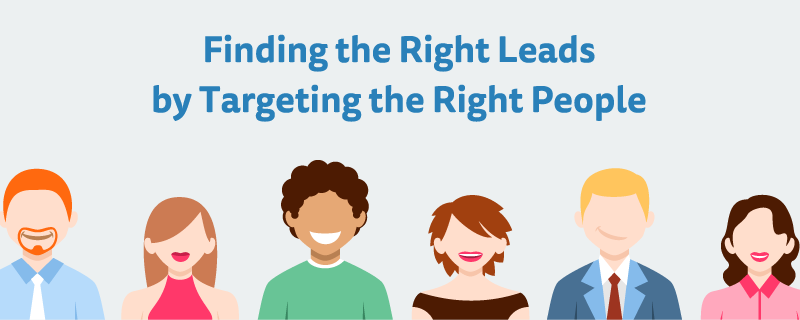BLOG
How to Create Buyer Personas
Buyer persona or persona mapping creation easily compares to skydiving.
If you were to go skydiving, you would not jump first and worry about a parachute later, would you?
- First, you would develop a plan and strategy.
- Second, you learn about the different types of equipment you might need.
- Third, you might research and contact reliable companies that will train and guide you from start to finish.
- Finally, after you have your equipment and know how to use it, you can safely make the jump.
Like skydiving, marketing is strategy-based. Those without a solid strategy will soon find themselves jumping without a parachute. Before you begin putting together any content for your marketing, you first need to create buyer personas that will help you generate qualified leads.
Starting with a few good buying personas can help you narrow down your best target audiences and generate the best-qualified leads.
In this article, we will discuss the benefits of a targeted buyer persona and how you can start creating your own.
By understanding your buyer’s needs persona, you’ll create better marketing content and attract solid leads.
The benefits of buyer personas
Let’s dive in with an example. You own a property development company and you mainly deal with commercial buildings and spaces. You have spaces in a new, fairly expensive building that is right along the coastline and is only a block away from a higher priced residential area.
How could having a buyer persona attract just the right buyers? Who might be interested in purchasing space for their businesses?
The best buyer personas are narrow and finely tailored. They are your ideal clients.
It is not enough to say that you are marketing to mothers, small business owners or teachers because even in those niches, there are even smaller niches. The needs of mothers to newborns are different than the needs of mothers with teenagers or adult children. If you try to market to both, your content will have to be general and uninspiring.
Similarly, a small business owner with a startup has different needs than a small business owner with a 10-year-old company. A startup might have a stricter budget whereas an experienced business owner might be looking to expand and have more capital to do so.
In the property development scenario, you probably would not want to market to startups because your building is more expensive. A startup could easily fold, and you might have an empty space once more. Since it is a seaside location, you might target cafe and bakery owners looking to open a second location, or you might target small boutiques that carry summer clothing and beachwear.
Targeting those within your buyer persona will also lessen your chances of returns or contract breaks. If you lease your commercial spaces mainly to startups with small budgets, you may find that your building spends more time empty than it does full.
Where are your ideal clients hanging out?
Having a few strong buyer personas will also help you determine where your audience gets its information from, which can help you decide where to market.
For example, you would not want to advertise your coastline building in regional housing magazine that targets mainly homebuyers.
Sure, a few business owners might flip through the magazine and see your ad, but your chances are slim. It would be better to advertise on websites geared towards helping small businesses or other commercial property websites.
Once you find out where your audience is, you will have a better chance of generating strong leads.

How to create a buyer persona
Now that you understand the importance of buying personas, let’s look at how you can start thinking about and shaping your own buyer persona.
To start, think about your typical buyer. What does this person look like? What are his or her needs and wants? Consider the following and create a rough sketch of your buyer persona. This will help guide you later on.
- Age
- Gender
- Location
- Occupation
In our property development example, your outlined buyer persona might be small businesses owners ages 35-55 who have businesses that are five to 10 years old and are located mainly in the Sunshine Coast region. In some cases, gender may or may not matter, but it is smart to consider it nonetheless.
Now try to put yourself in your buyer persona’s shoes. What does this person need? What kind of information are they looking for? Where will they go to find the answers they are looking for?
You may have a rough idea of how to answer these questions, but why guess when you can conduct research and get the real answers? The best buyer personas are researched and created through interviews with people in your perceived buyer persona. This takes out the guesswork and will help you finely tailor your marketing content to reach your strongest leads.
Ask the right questions to the right people
For this step, you should be interviewing not only customers and prospective customers, but also members from your sales and customer service teams. As they address customer concerns and complaints every day, they will have good insights into where customers get stuck or any frustration they have with your industry in general.
As you gather research and return to your outline of a buyer persona, fill in the gaps in these topics to create a fully buyer persona. Again, we will use the property development example to make sense of each topic.
- Background: General details about a customer and his or her company (how long have they been in business, what do they produce or service, etc).
- Job notes: What does your customer look for when considering a rental space? Is it primarily driven by location, or do they have other needs such as storage or dining space issues?
- Source of Information: Where are your customers going to get their information? What sources do they find trustworthy?
- Primary objectives: What does your buyer want to achieve with his or her choice of property?
- Preferred method of content: Do they subscribe to emailing lists or are they browsing blogs?
- Objections: What are the biggest problems your buyer persona faces when looking for potential spaces?
- Best marketing messages: What message directly relates to your buyer persona? What will resonate the strongest?
Once you fill in these gaps, you will have a better understanding of what your buyer persona needs, where they go to get information, how you can solve some of the main objections and what speaks to them the most.
Knowing this information will help you create targeted content that will convert these personas into customers. Before you know it, your new building will be full of happy customers that love their space and are happy to stick around for years to come.











